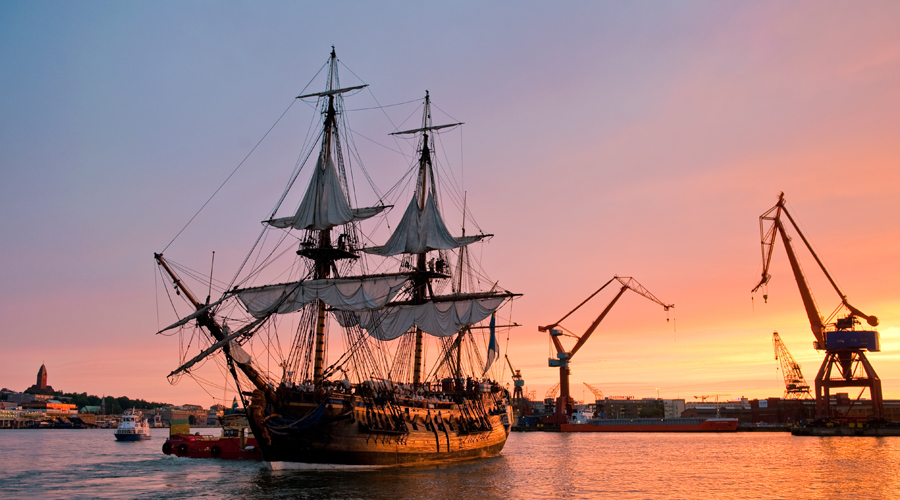
Published
- Markets
- Trade
Tailwind for Swedish exports
EKN joins the world’s largest sailing ship to showcase Swedish exports, offering partners and exporters meeting venues from Europe to Asia.
To highlight Sweden’s long and successful history as a trading nation, the world's largest ocean-going wooden sailing ship has set sails for a two-year trip in Europe and Asia, starting on June 8 from Gothenburg.
The ship is an exact replica of the East Indiaman Götheborg of Sweden, launched in 1738. Back then, the Swedish and Danish East India companies imported more tea from Asia to Europe than any other trading company. The purpose of the 2022/23 trip, however, is to promote Swedish exports with EKN as proud sponsor.
“This voyage will create unique opportunities for Swedish exports around the world and the mission of EKN is to offer attractive financing solutions”, says Anna-Karin Jatko, Director General at EKN.
The ship will visit important hubs for trade and finance, such as London and Singapore, where EKN will host events. The transition to a fossil-free society represents a tremendous business opportunity for Swedish companies, given their long history of developing the technology required to meet the rapidly increasing demand for solutions in renewable energy and other areas that help build a more sustainable world.
“Swedish companies offer the kind of solutions the world needs right now and EKN makes this technology accessible by covering loans that finance exports of Swedish goods and services”, says Jatko and adds, “The demand for sustainable and technologically innovative solutions in infrastructure, energy production, transportation and health care is significant in many of the countries visited by Götheborg of Sweden, which is why EKN is on board.”
Sweden joins the world
Many of Sweden’s major exporters are companies founded well over 100 years ago. The Swedish East India Company, founded in 1731, was one of the most successful companies in Swedish history and made the small country of Sweden part of a big world through profitable trading trips to China.
The naval powers of the Netherlands, Britain and Portugal were the first ones to start trading with the East Indies and came to be predominant in the 18th century.
Nevertheless, on June 14, 1731, a newcomer emerged from Sweden. The country needed to increase its barter trade, which was a factor that made the Swedish East India Company gain its royal charter from the king quickly and easily. Sweden immediately began to successfully compete with other established nations.
